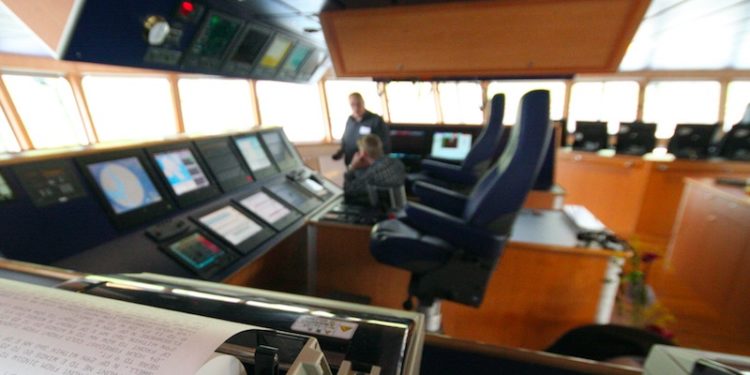After tracking the satellite positioning data of 70,000 fishing vessels for the past four years, a group of researchers have concluded that commercial fishing covers over 55% of the ocean’s surface. Europêche has hit back at the claim that fishing therefore occupies four times as much space as agriculture in terms of square kilometres.
According to Europêche, the the report is based on scientifically unsound data, overestimates the proportion of the seabed where fishing occurs and has little use for fisheries management. Europêche also argues that the study provides no new insights since fishing vessel monitoring systems have already been widely implemented and enforced across the oceans for years.
‘It is appalling to see how an organisation using non-reliable data is allowed to publish a study based on estimates and assumptions in a scientific journal,’ said Europêche President Javier Garat.
‘AIS is a tool for safety purposes, never designed to be a policing or scientific tool since it is not encrypted and it can be easily altered. Apart from AIS, the EU fishing fleets are equipped with secure and effective monitoring, control and surveillance systems thoroughly checked by the competent authorities to track all fishing vessels’ activities.’
He commented that AIS is a tracking system used to provide information on the vessel’s position, course and speed. Its main purpose is to avoid collision between vessels from all sectors and not to control fisheries nor assess its footprint.
‘The leading research organisation, Global Fishing Watch, has been analysing the data collected from what they describe as “known or possible commercial fishing vessels” based on changes in vessel speed and direction. However their own website states that the system “may show apparent fishing activity where fishing is not actually taking place” and for that reason included the following liability disclaimer: Any/all Global Fishing Watch information about apparent fishing activity should be considered an estimate and must be relied upon at my own risk (the database user).
He said that the claim that fishing takes place over 55% of ocean space leads to the immediate conclusion that fishing vessels operate everywhere, and the implication that the industry is putting more pressure on fish populations.
‘Tuna fisheries in the high seas constitute the majority of the “footprint”, that has been monitored and controlled for decades by RFMOs. Tuna is a highly migratory species and therefore fishing vessels spend many days tracking them across oceans without deploying the fishing gear. However, the study considers this as fishing, conveniently for them,’ he said.
‘Furthermore, this type of fishing has very little impact on the marine environment. For most of the areas, fish stocks are in fact performing well since 78% of the tuna global catch comes from healthy stocks, and this fishery is well documented and globally stable.’
Europêche stresses that the global fishing footprint cannot be compared to agriculture, as the latter totally eradicates the natural ecosystem by transforming it and eliminating the native flora and fauna. Tuna fishing has no impact on the marine seabed and solely affects the top predators’ abundance which has a strong capacity for recovery. Therefore, compared to other animal protein, wild-caught fish has a significantly lower carbon footprint due to the fact that it does not need to be artificially fed nor does it require the use of water supply.
Concerning the footprint of bottom trawlers, this has been mapped in much higher resolution already in many parts of the world thanks to the commitment of the fishing industry and, according to the University of Washington fisheries researcher Ray Hilborn, the report overestimates the level of seabed impact from trawls by ten-fold.
The study finds that large regions of the ocean are not heavily fished, and these areas may offer opportunities for low-cost marine conservation. Europêche claims that apart from the fact that it is quite alarming that a scientific paper formulates controversial policy actions at global level; closing an area to fishing must be based on a scientific recommendation plus a previous impact assessment on a case by case basis and not because it is cheaper. In addition, it should bring a tangible benefit for nature compared with the previous situation.
‘This type of study, far from providing objective and scientific information, only serves to confuse and deceive public opinion, and obey other interests distant from sustainability and good governance of the fishing activity,’ Javier Garat said.
‘The reports fails to reflect that the EU fishing fleets comply with the highest labour, training, safety, environmental and hygiene standards and are well-monitored by several modern electronic and satellite systems. It is therefore clear that the footprint of a European vessel cannot be compared with that of an Asian fishing vessel, as portrayed in the study.’









